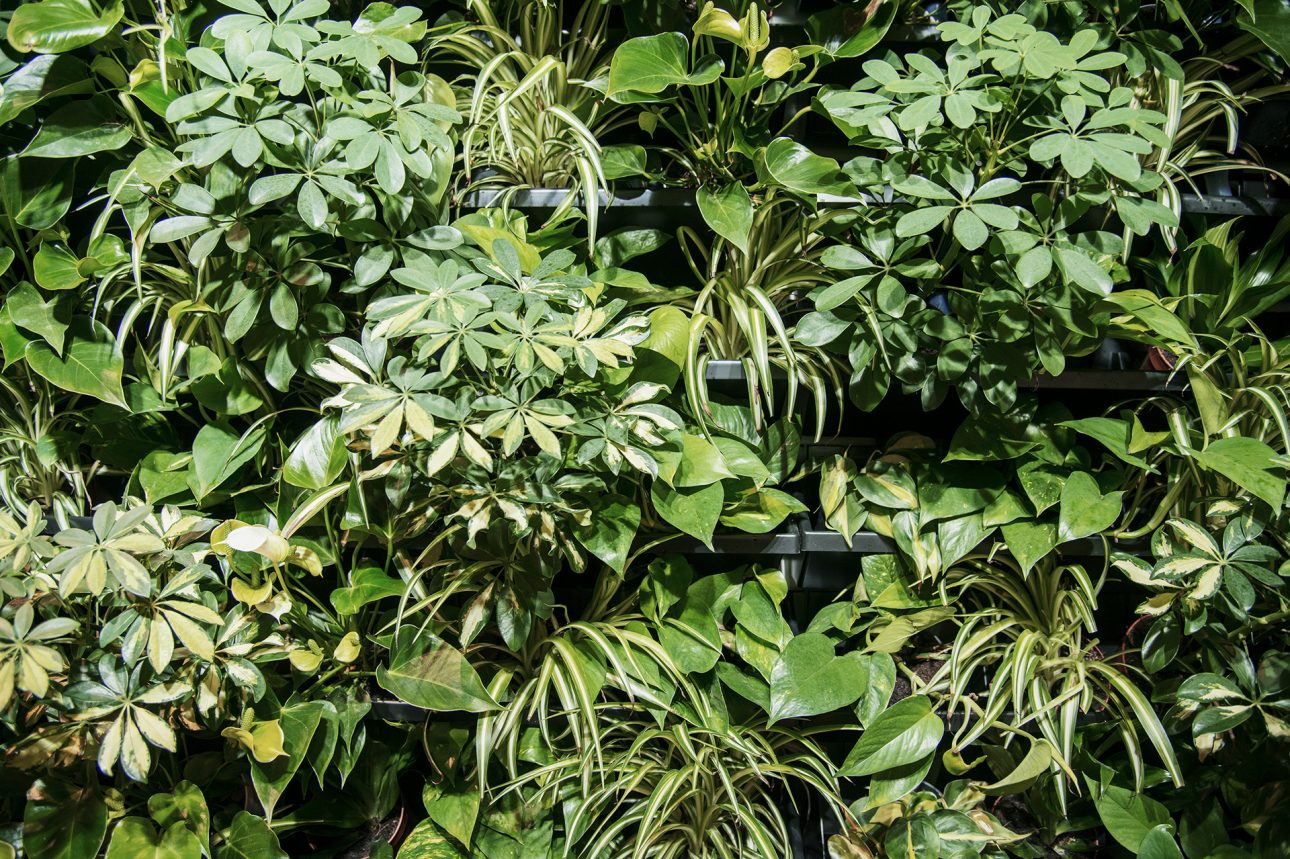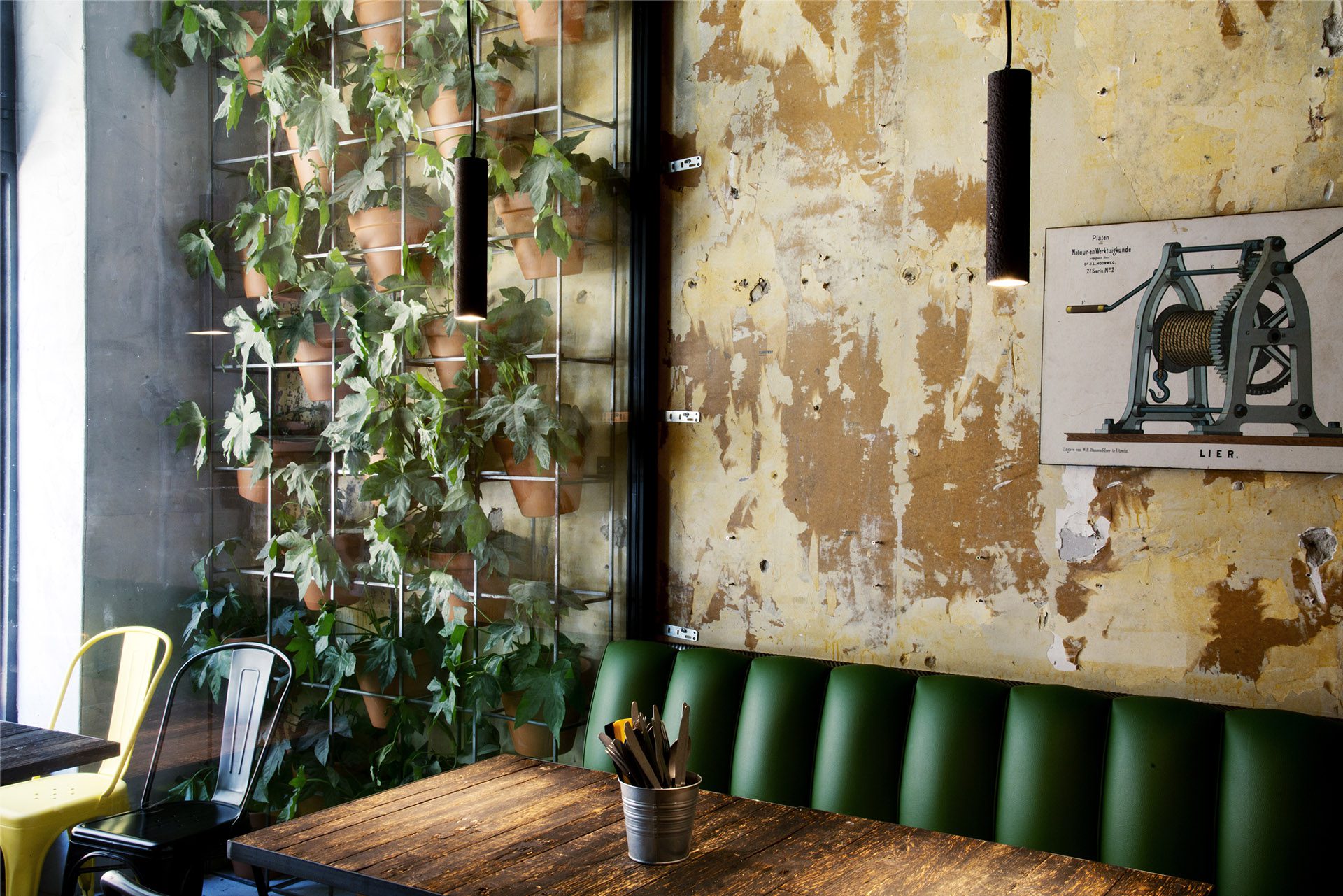
Living Wall – Breathing Wall
Method and operation of a ‘Breathing Wall’
A Living wall ensures that not only the plants, but also visitors, residents or employees thrive in a healthy living or working environment. A vertical garden from Moss wall is characterized by the use of slow-growing, air-purifying plants in a maintenance-free and sustainable system.
By studying which plants purify the air most effectively, only a few plant species are needed to improve the air quality in a room. Especially for schools, living rooms, hospitals, public spaces and office buildings, NADA / Moss wall has developed the Breathing Wall, a fully automatic vertical plant wall with the most air-purifying plants in our range. In addition, we offer stand-alone air-purifying plants that can independently provide around 30 m2 of clean air and are also very easy to handle and care for, making it ideal for those who have little time or green fingers. Would you like the effect or vertical green but you have no walls? No problem: we also have a standing, hanging and mobile version in our range.
Since in a traditional room or locally many harmful substances, VOCs or CO2 emitters / people are located in a relatively small space, two of these stand-alone planters are needed per (classroom (64 m2 / 160 m3 and 25 people) to improve air quality, or a 3.8 square meter breathing wall to actually purify this air and regulate the indoor climate to make a good analysis and plant selection.
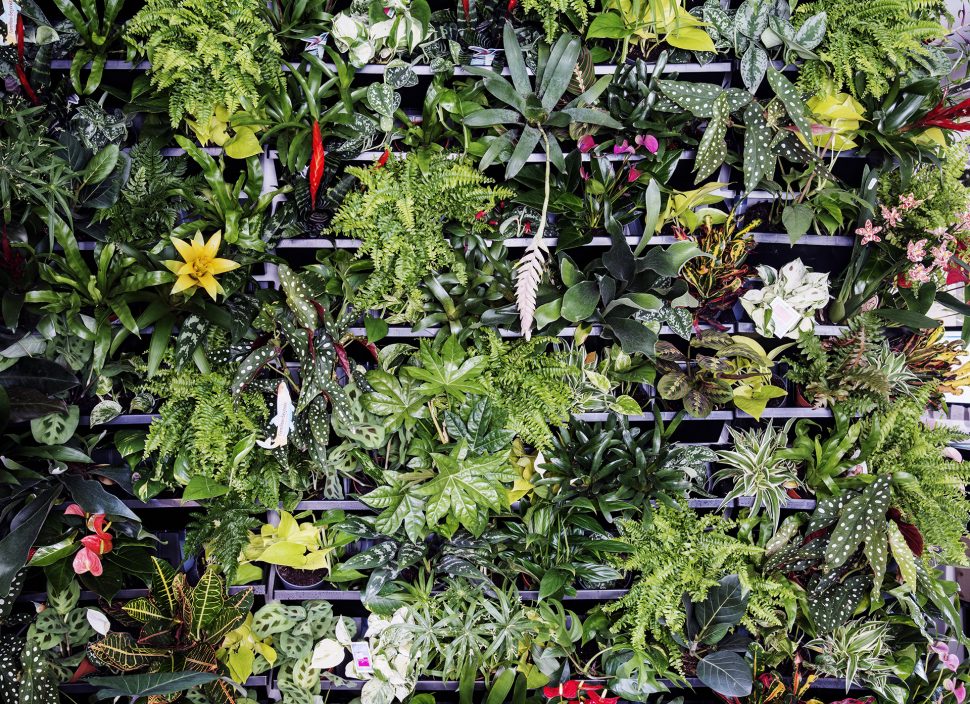
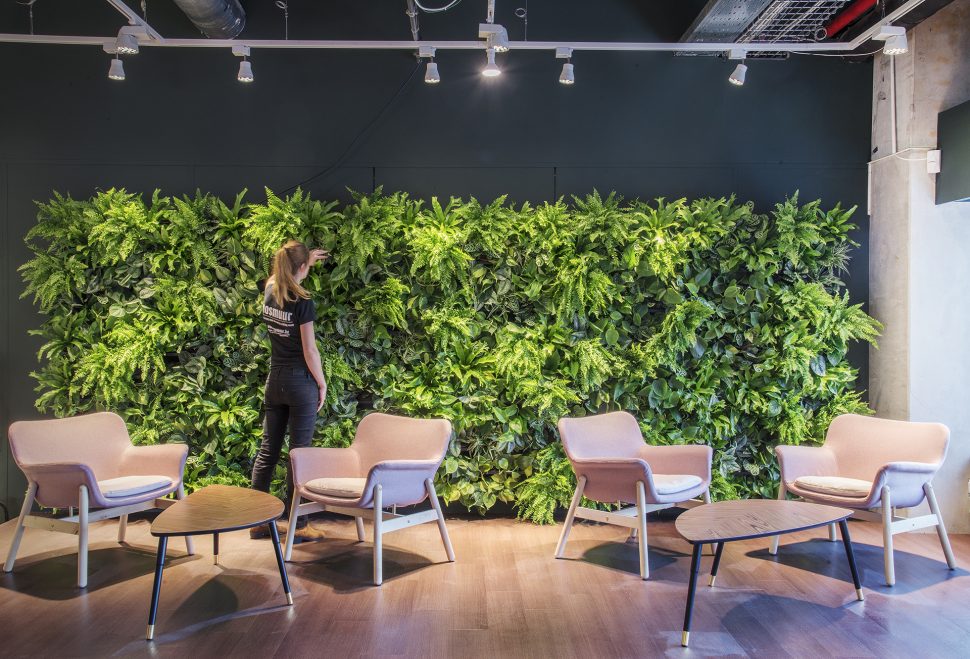
The system of a vertical ‘breathing wall’ or green wall
Our green walls absorb sound and are a real green eye-catcher for your space. A choice can be made from a wide range of interior plants, for schools, hospitals or offices we recommend our breathing wall systems with air-purifying plants. Our vertical walls have a unique irrigation system that makes regular maintenance unnecessary. If the right light is present, every plant can grow in this living green wall. The system consists of wall panels in various sizes that are secured against an existing wall or support structure. The plant trays or cassettes are mounted in these panels in which the plants are secured. Each tray has a water basin and is connected to the lower or upper tray, so that fresh water can flow from top to bottom.At the bottom or behind the wall is a collection tray or (if larger walls) a water reservoir with sufficient capacity to fertilize and irrigate the plants. Watering is only necessary once a month, even in the summer.
Depending on the size, the water is pumped through the system, the water is filtered through the roots of the plants during this passage and returns to the basin purely. Additional nutrients can be added to the water or collected by fish or animals. The air-purifying effect can, if desired, be easily measured by testing the water or soil analysis of the soil. The extent to which the wall is finished is completely free to choose. The reservoir can be incorporated and out of reach or passers-by or visitors, but can also be shown as part of the educational / aesthetic process and serve as a small indoor pond.
Advantages of this system
- Works with standard earth plants in their original pot that can be found everywhere
- Decreasing stress and regulating heat: plants retain heat in the winter and cool the indoor climate in the summer
- Modules are made from recycled plastic and therefore 100% ecological
- Technology and ltration consistent or simple, standard devices available in every do-it-yourself store, so easy to assemble and maintain without any knowledge
- The easiest to install and dismantle
- The easiest to plant and change
- The easiest to maintain
- 4 week water cycle, ideal during vacations
Improved concentration
A major advantage of plants that purify the air is that they can immediately help with complaints such as headaches and dry eyes, but also respiratory problems, dizziness and concentration problems. Because they improve the air and the concentration, you often come across certain species in office spaces.
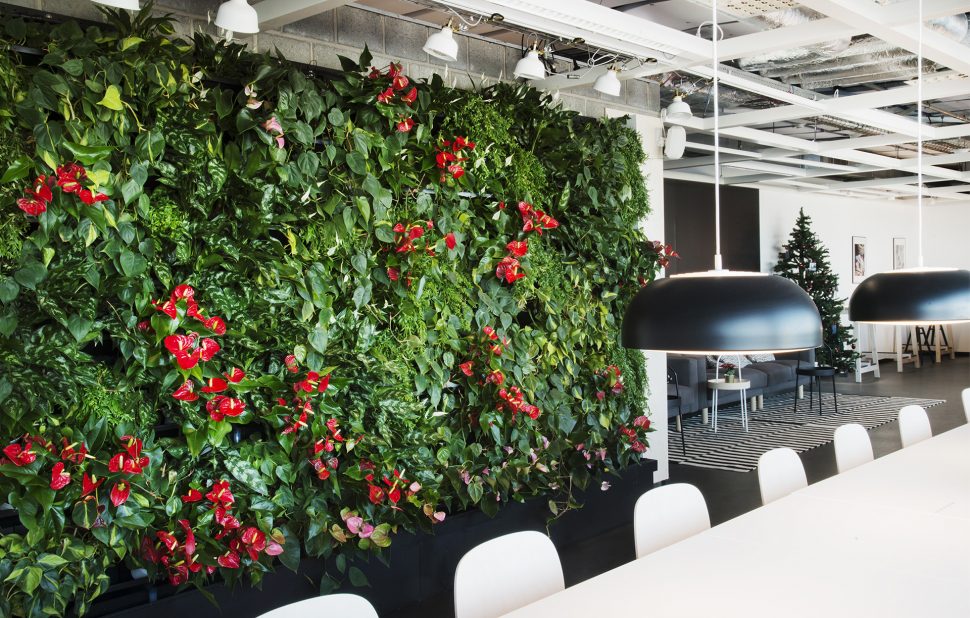
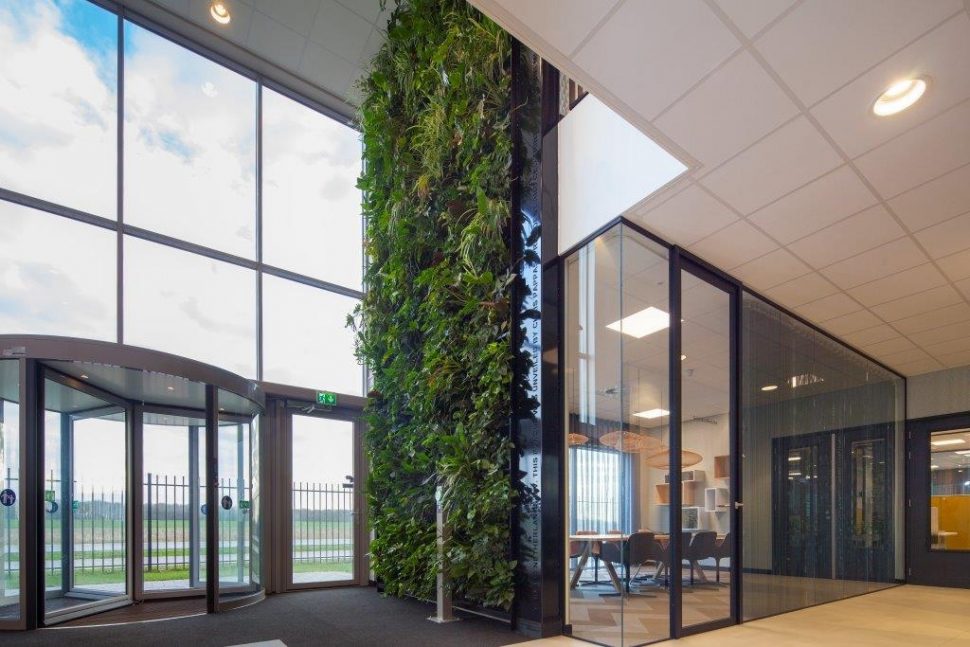
De luchtzuiverende beplanting
Elke kamerplant produceert zuurstof, maar niet alle kamerplanten hebben een luchtzuiverende werking. Er is echter een groep kamer- planten waarvan wetenschappelijk is bewezen dat ze bijdragen aan een schonere lucht in huis. Deze planten nemen via hun bladeren schadelijke stoffen op uit de lucht. Vervolgens worden deze stoffen in de plant of de wortel opgeslagen en afgebroken.
In de bekende Clean Air study onderzocht NASA de beste manieren om de lucht in een ruimtestation te lteren. Zo ontdekten de onder- zoekers dat een aantal planten onder andere de chemicaliën benzeen, tricholoorethyleen en formaldehyde uit de lucht kunnen halen. Benzeen en trichloorethyleen zijn oplosmiddelen die in verschillende materialen voorkomen. Formaldehyde, een bekende hoofdpijnver- oorzaker, is een gas dat bij de productie van leer of tapijt wordt gebruikt en dat vrijwel in elk binnenklimaat voorkomt. Er werd onder- zoek gedaan naar de natuurlijke luchtzuiverende werking van een aantal (kamer)planten. Ze testten of deze planten voor een gezonder binnenklimaat konden zorgen om zo het ‘Sick Building Syndroom’ (SBS) te voorkomen. De focus lag vooral op goed geïsoleerde huizen en scholen, maar heeft natuurlijk effect op elk binnenklimaat.
The toxins that the plants had to remove from the air were benzene, trichlorethylene and formaldehyde, common toxins indoors. NASA research resulted in eight tables of plants, and the extent to which these plants remove the aforementioned toxins from the air. The results show that all plants purify the toxins, but some plants do that better than others. It is these plants that we selected for our vertical walls. The toxic substances to be purified also play an important role in the selection.


